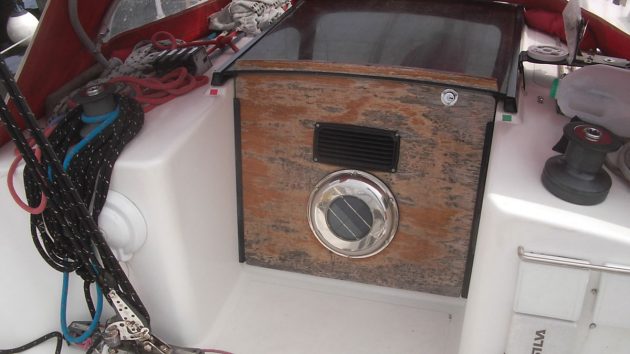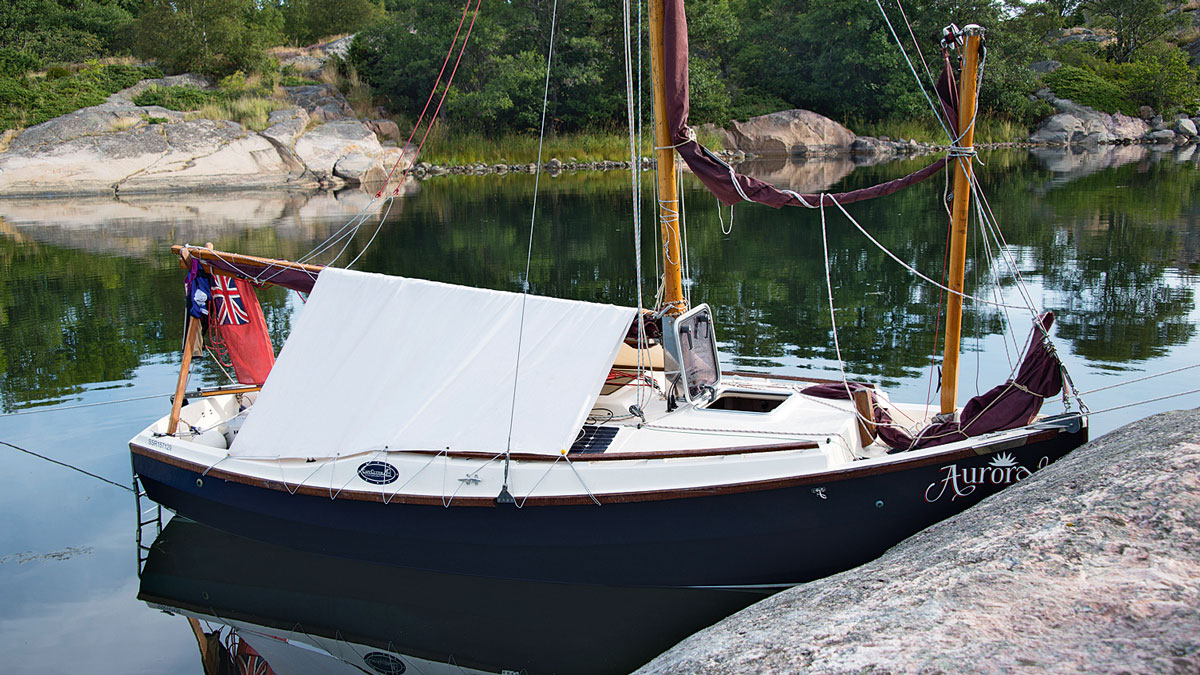Ten years ago, Colin Haines installed a solar-powered vent on his boat. He shares the results and if it still keeps his boat truly dry
Mains electricity-powered dehumidifiers, are effective but expensive and cost money to run. They also assume that some ‘helpful’ person does not unplug the shore power supply.
I don’t have my boat lifted out of the water during the winter for several reasons.
Stating the obvious, sea water is warmer than sub-zero nights that freeze an entire boat.
Therefore, if there is any damp, the last place condensation will occur is in the warmer bilges.
Also, when stormy winds blow, the boat can heel rather than be held rigidly by the localised pressure points of the cradle or props holding it upright.
Atmospheric humidity is less when the winter sun is shining than during grey, overcast days.
Ten years ago I exploited this fact by installing a solar-powered ventilation fan in the washboard to draw dry air through the boat.
Continues below…
Boat condensation: one sailor’s solution to keep your boat dry
Many boats suffer from water droplets forming on cold windows as a result of hot air or steam becoming cool…
Where is the best place to install a boat vent?
Where is the most effective place to install a boat vent? Surveyor Ben Sutcliffe-Davies has some tips
How to remove mouldy stains from interior woodwork – Ask the experts
Kevin Woods from Dublin writes: “I have a 1991 Feeling 286 Special. Some of its timber interior is stained by…
How do I get rid of a mystery boat smell?
PBO reader Simon Bennett is struggling to get rid of a strange boat smell, which is permeating his clothing and…
Her marina mooring holds her stern facing due south. When the winter sun is at its highest, and humidity the lowest, the solar-powered fan draws the dry air through the boat.
Humidity rises as the sun’s power weakens when it begins to move towards the end of the day and, with less solar power, the fan slows down and stops when the sun sets before humidity rises even further.
On dull days it draws very little damp air into the boat.
As a result, the boat’s interior is always dry when I visit her during the winter to do odd jobs while the batteries are being recharged.
The moisture from my breath has long since gone when I return two months later.
More importantly, with the shore power unplugged for the rest of the time, I don’t have to worry about another boat with faulty electrics turning up and galvanically eroding the saildrive.
Nor does it cost a single penny to keep the interior bone dry.
The fan is designed for shed roofs and when rain is driven against it, no water enters the boat.
Ten years after installing the solar-powered vent fan (they’re available for around £30- £40 nowadays), it’s clear the manufacturer chose to make it from suitably durable materials.
I commend this parsimonious approach to keeping the cabin dry to anybody with a north-south orientated berth, or one that allows the stern to face within perhaps 15° of due south and does not have any problems with shadows.
Enjoy reading Banish winter damp: install a solar-powered vent?

A subscription to Practical Boat Owner magazine costs around 40% less than the cover price.
Print and digital editions are available through Magazines Direct – where you can also find the latest deals.
PBO is packed with information to help you get the most from boat ownership – whether sail or power.
-
-
-
- Take your DIY skills to the next level with trusted advice on boat maintenance and repairs
- Impartial in-depth gear reviews
- Practical cruising tips for making the most of your time afloat
-
-
Follow us on Facebook, Instagram, TikTok and Twitter








